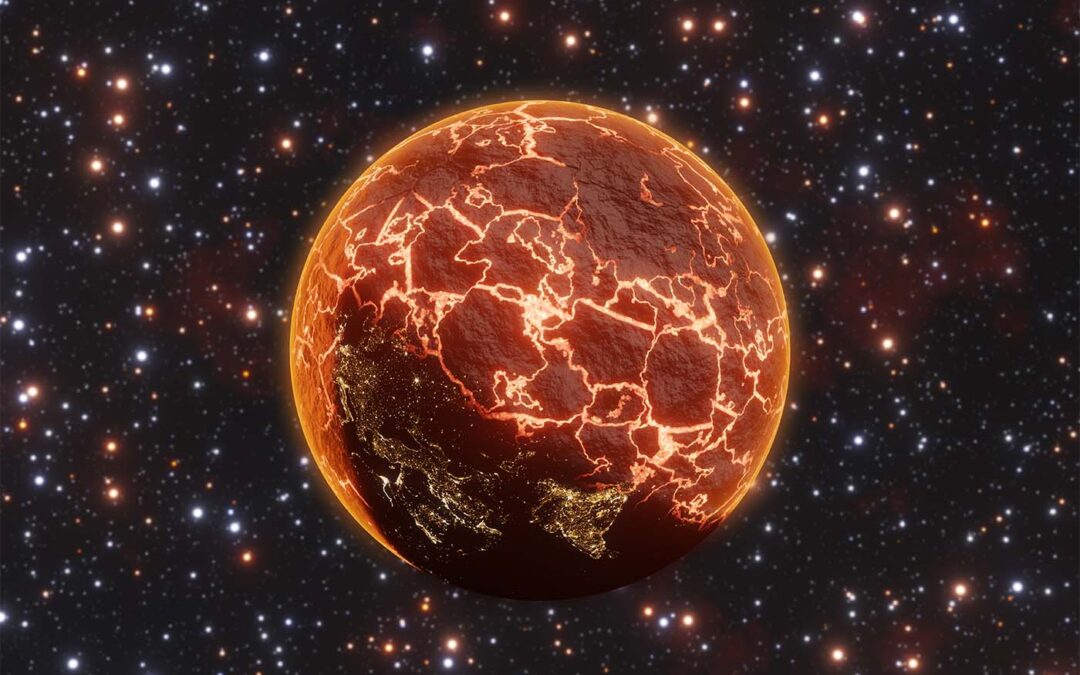For decades, we have been warned about impending doomsday prophecies, especially from climate activists. These warnings have done nothing but curb action.
How urgent is it for us to invert the world’s environmental hourglass? How soon is too soon to start the climate crisis stopwatch?
If you walk by Union Square you will see an alarming set of numbers plastered to the iconic One Union Square Building; numbers said to represent the amount of time left to “save the planet” from “irreversible” environmental doom. Accordingly, there are approximately five years and 320 days, 30 minutes, and 33 seconds (at the time of writing) before the world explodes into an innumerable constellation of multi-trillions of pieces; rock, agricultural and biological matter, vaporizing all 326 million trillion gallons of water.
This clock represents hardly the only “doomsday” ever contemplated by physical and social scientists, atomic physicists, philosophers, and theologists of many kinds. A group of scientists, meeting since the Cold War, created their own “doomsday clock” (hereinafter referred to simply as “doomsday”) in which we are currently “90 seconds to midnight,” a point indicating the end of the world, or at the very least, the end of known human civilization. The main contributory factors are the ongoing war in Russia and Ukraine, with the threat of nuclear escalation, as well as the dangers posed by climate change. The climate doomsday replaced a national debt doomsday “watch” which was thereby relegated to a restaurant exterior near the Times Square subway station.
The conceptual issue of climate doomsday is that the clock makes no sense from a scientific standpoint. Climate change is not a future event waiting to take place, it is happening in the here and now, and will continue to occur gradually, not all at once, as it has throughout geological, archaeological, and recorded history. The timeline presented today is not a countdown to “the end of the world,” but rather an estimation of when the world will reach an average of two degrees Celsius above its pre-industrial revolution average.
There are of course serious dangers associated with this warming, such as stronger hurricanes, worsening floods and forest fires, but the world will not spontaneously combust. It is entirely possible that the trend will be bucked; solar energy, and other renewables are quickly being developed and placed into energy grids across the developed world, and this should only continue. It is also possible that the year given in those UN reports will be cooler than expected, because the climate has continually proved quite random.
For this reason, the doomsday movie “Don’t Look Up” in which multi-millionaire star- and starlet-actors berated the audience for not taking seriously the film’s giant looming meteor (a metaphor for, well, you guessed it, climate change!) was not only obnoxious and repellant, but provably untrue. A meteor impacts at once – climate change over decades, centuries, even millennia. Some regions will bear the brunt of damages caused by a warming Earth, and other regions may actually see some benefit, such as extended harvest seasons.
For someone worried about the serious threats posed by climate change, your first instinct may be to defend these types of doomsday clocks, despite their obvious scientific issues. “Perhaps,” you might say, “these clocks are exaggerated in their timelines, or in the consequences, but won’t the fear they bring inspire much-needed action for this threat needed to be taken seriously?” But we have been hearing doomsday threats for years, and we already have data to prove that this is not the case. Our apocalyptic fears have indeed made an impact on society, not by producing better climate outcomes, but rather in bringing more anxiety and depression.
A New York Post article details recent TikTok’s made by “Zoomers,” (Gen Z), with many citing the impending climate apocalypse as a reason not to act to protect the environment, but to abandon their own ecological ideals, since “the world is going to end soon anyway.” There has been a large spike in “climate therapists,” psychologists whose job it is to encourage teenagers and young adults to find purpose in a world of existential doom. One can hardly blame the kids for their anxieties – their entire childhood, they’ve been told that it is up to “our generation” to “save the planet” from its impending doom. What a burden for our imposed-upon juvenile geniuses!
In a world filled with media-driven clickbait and polarized news streaming, ordinary folk, young and old, are pounded with news of existentially terrifying global risks, such as wars, pandemics, threats posed by artificial intelligence, and of course, the upcoming climate doomsday. All the while, tangible immediate risks of decaying local government, vanishing educational achievement, and general authoritarianism (which many of us can ameliorate with simple participation at the polls) go largely ignored.
Franklin Delano Roosevelt, a mighty wartime president famously said “The only thing to fear is fear itself.” Each problem needs to be addressed on its own terms, with achievable solutions to strive for. Ambitious solutions of dubious intellectual origin have previously spawned pain and poverty themselves, of course. Prohibiting families from having more than one child, as China did in the past, surely limited the amount of carbon dioxide spewed into the atmosphere, but with horrible costs to their personal and societal freedom.
We should resist calls to abandon our dearly held values, traditions, and principles in the name of “Saving the world.” It can be tempting to live your life like we are in an apocalyptic science fiction movie, but this very attitude is only causing more inaction, and pushing us closer to a self fulfilling prophecy of doom. So let’s ignore the doomsday clocks and instead focus on what we can accomplish together – for the climate or for anything else we set our mind to.








